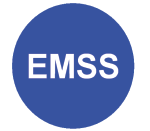Analysis of obesity epidemic modelling: is there a solution?
- a,b Aviation Academy, Amsterdam University of Applied Sciences, Amsterdam, 1097DZ, The Netherlands
- c Ecole Nationale de l’Aviation Civile, Toulouse, 31400, France
- d Associate Lecturer in Economics, Middlesex University London, NW4 4JR, United Kingdom
Cite as
Shirai Reyna S., Mujica Mota M., Delahaye D., Ortiz J.M. (2020). Improvement of APOC Operations by using Simulation and Experimental Economics: Conceptual Approach. Proceedings of the 32nd European Modeling & Simulation
Symposium (EMSS 2020), pp. 207-213. DOI: https://doi.org/10.46354/i3m.2020.emss.029
Abstract
This work aims at developing an agent-based platform that allows to model and analyze decisions made by different stakeholders in an Airport Operations Centre. We will develop a methodology combining simulation, agent-based
modelling and behavioral economics experiments for identifying the decisions and incentives behind decisions of the stakeholders in an Airport Operations Centre environment. Once, the causal decisions have been identified,
these will be translated into an agent-based environment so, it will be possible to have a virtual environment for identifying which incentives are the best for aligning the objectives of the center, considering the diversity
of objectives present in the system. The causal-relationships identified in the study will be validated with a human-in-the-loop environment already developed under the SESAR program. This study is an interdisciplinary
one which integrates simulation, decision making and behavioral economics in the Airport Operations Center environment.
References
- AIRBUS. (2017). Global Market Forecast Growing Horizon 2017-2036. AIRBUS, Blagnac Cedex,
France, Ref, D14029465. - APOC. (2008). EUROCONTROL, https://www.eurocontrol.int/articles/airportoperations-centre-apoc
- Banks, J. S. Carson, B. Nelson and D. M. Nicol. (2010). Discrete-event System Simulation. Harlow, UK, Pearson Education Limited.
- Bortolotti, S., Devetag, G., and Ortmann, A. (2016). Group incentives or individual incentives? A realeffort weak-link experiment. Journal of Economic Psychology, 56, issue C, p. 60-73.
- Bouarfa, S., Blom, H., and Curran R. (2012). Airport Performance Modelling using and agent-based approach”, in Proc. of 3rd ATOS2012, Delft, The Netherlands.
- Bouarfa, S., Blom, H., and Curran R. (2018). Agentbased modelling and Simulation of Coordination by Airline Operations Control”, IEEE Transactions on Emerging Topics in Computing.
- Casti, J. L. (1998). Would-Be Worlds: How Simulation is Changing the World of Science, Wiley, New York.
- Devetag, G., and Ortmann, A. (2007). When and Why? A Critical Survey on Coordination Failure in the Laboratory. Experimental Economics. 10. 331-344.
- EUROCONTROL CDM-TF. (2005). Airport CDM Implementation – The Manual, EUROCONTROL,
Brussels. - Friedman D., and Sunder S. (1994). Experimental Methods: A Primer for Economists, Cambridge
University Press. - Grether D., Fürbas S., and Nagel. K. (2013). “Agentbased Modelling and Simulation of Air Transport Technology”, Procedia Computer Science, Vol.19, pp. 821-828.
- ICAO. (2007). Air Traffic Management, ICAO, Doc. 4444.
- ICAO. (2006). Aircraft Operations, ICAO, Vol. 1 Flight procedures Doc. 8168.
- Kagel, J.H., and Roth A. E. (2016). The Handbook of Experimental Economics, Vol 2., Princeton
University Press. - Kjenstad D. (2019). Enhanced Collaborative Airport Performance Management, SINTEF Open Aviation Day, SINTEF Digital.
- Macal, C., and North, M. (2008). Agent-based modeling and simulation: ABMS examples. Proceedings - Winter Simulation Conference. 101-112.
- Markovits-Somogyi, and R., Aczel B. (2013). Implications of Behavioural Economics for the
Transport Sector, Periodica Polytechnica Transportation Engineering. 41. 65. 10.3311/PPtr.7101. - Metcalfe, R., and Dolan, P. (2012). Behavioural economics and its implications for
transport, Journal of Transport Geography, Elsevier, vol. 24(C), pages 503-511. - North M.J., and Macal C. (2007). Managing Business Complexity: Discovering Strategic Solutions with Agent -based Modelling and Simulation, Oxford U. Press
- OAG. (2018). OAG punctuality league,” OAG, www.oag.com
- TAMS Partners. (2012). TAMS Operational Concept Document, TAMS Project Member Organizations.
- Zhang, Q., Han, B., and Lu, F. (2009). Simulation model of passenger behavior in transport hubs. International Conference on Industrial Mechatronics and Automation, Chengdu, pp. 220-224
